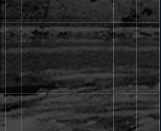|
Between
1973 and 1975 the students lay low to know what and whom we could
count on. Then, around 1975, they began to apply pressure. And curiously,
they found a very concrete way of publicly poking a little fun at
the enormous repression of anything that smelled of politics: Instead
of creating student centers, or student groups, they created student
cultural organizations; they created workshops -- music workshops,
art workshops, theater workshops, painting workshops. The student
movement began to take shape through those workshops.
I was one of the creators of the cultural movement at the University
of Chile. In 1977 an extremely important movement was formed called
ACU [Agrupación Cultural Universitaria (University
Cultural Group)], which I headed in 1980 and 1981. It provoked,
confronted, and said to the [professional] artists, "Look,
we’re students, we’re doing this, and what are you doing?"
We organized enormous festivals: music festivals, painting festivals,
theater festivals. We couldn’t organize the students through
union or university demands; we had to do it very carefully, through
artistic demands. Those student cultural activities acted more as
a kind of safety valve, an outlet for expressing what the students
were feeling, than as a pretext for political organizing. I believe
that the movement was very honest. Many in ACU were not members
of any party, I’d say the vast majority.
When I was arrested in 1981 and disappeared for five days, they
had to let me go because of national, and especially international,
pressure. I had been a party leader of some influence (in 1981 I
left the Communist Party over an important difference of opinion
on how to confront the country’s political situation), and
people knew they couldn’t touch me because I had considerable
strength within the student movement.
While I was president of ACU, its secretary was a member of Ortiga,
a famous group in the Canto Nuevo, and we became friends.
With two or three others from Ortiga we formed an interesting new
group. It was interesting from a musical point of view because the
harmony of a soprano, a tenor, a contralto, and a baritone or bass
did not exist. There were none in the musical movement. And the
idea of working with women was an important challenge, musically
and politically. There were seven of us, and we called ourselves
Amauta.
We
too became part of the Canto Nuevo, which was in formation
at that time and so named by Ricardo García of Sello Alerce
to differentiate it from the New Chilean Song. Among its emergent
interpreters were Eduardo Peralta, Santiago de Nuevo Extremo, Capri,
Isabel Aldunate, Ortiga, Napalé, Amauta. There was fluid
communication among the groups, but nothing comparable to what had
existed during the years of the New Chilean Song: the conversations,
the discussions about where we wanted our art to go, whom it should
represent, what was it we wanted to say, what was the real expression
of popular music. There was no ideological connotation, no articulated
movement. So I would not say that the Canto Nuevo is a movement
that succeeded the New Chilean Song. Canto Nuevo was a name
under which a number of artists who were anti-dictatorship somehow
came together, but their goal was not to end the dictatorship. Their
fundamental mission was to express themselves as musicians, to make
music in a difficult, complicated, complex time.
|
|

